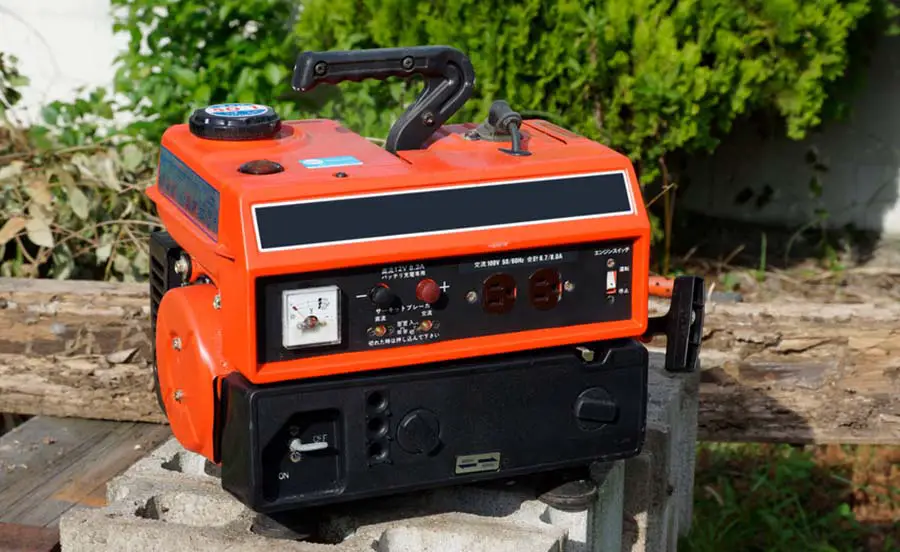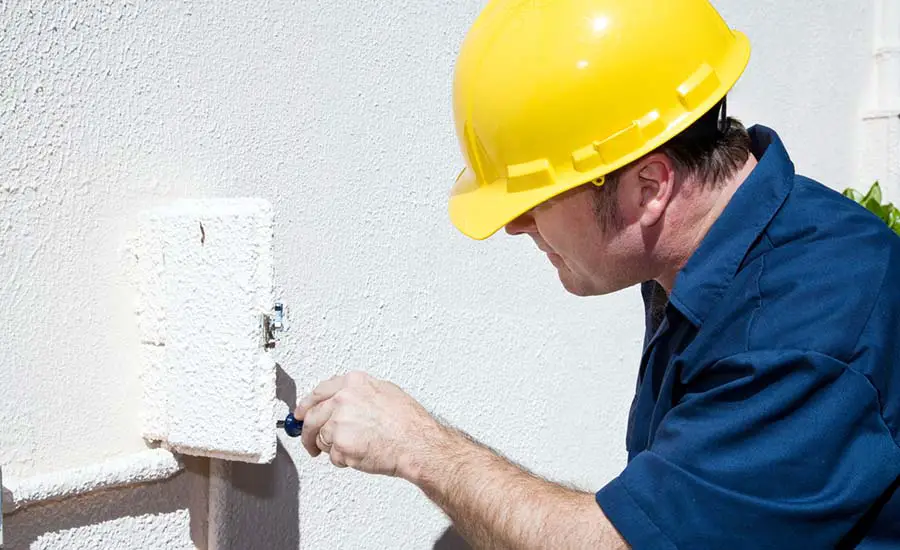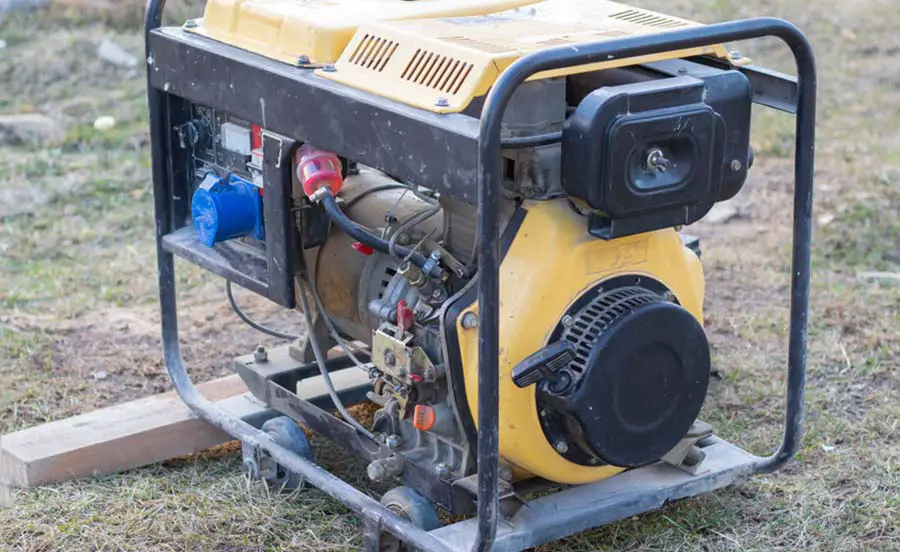
In the United States, the average electrical service for residential homes is between 100 to 200 amps. Occasionally, you will experience power outages to your service, requiring a backup generator to help. If you want to supply power to your entire home using a portable generator, you will need to find a generator suitable for your electrical service.
If you have a 200 amp electrical service, you will need a portable generator that is 15-20kw. A portable generator of this size will produce 15,000 to 20,000 watts, supplying power throughout your home. For homes with central AC units, these larger-sized generators are best.
When you have a larger electrical service like 200 amps, you must select the correct generator carefully. Undersized generators can quickly shut down and even damage the unit. Fortunately, picking a properly-sized generator for a 200 amp service is a simple process.
This article will cover everything you need to know when sizing a portable generator for your 200 amp service.
How Many Watts Do You Need For a 200 Amp Panel?
When measuring the power output of a generator, the most common way is using watts as a measurement. To calculate the watts, the formula you need to use is multiplying the amps and volts. This measurement will be crucial in ensuring that your generator is fit to supply power to your 200 amp service.
Most homes have a single-phase electrical service, considered a 120/240v delta electrical service. A 200 amp single-phase residential electrical service can handle 48,000 watts of power supplied to it. However, the electrical code recommends you use 80% of a service’s load for safety reasons.
To be on the safe side, you should load your 200 amp electrical service with a maximum amount of 38,400 watts. Do a quick calculation of your home’s electrical load and see the demand for the circuits. Most circuits will have a voltage rating next to the breaker in the panel with the amperage amount label on the breaker itself.
200 amp services can handle high wattages, which can be challenging to fully replace in a power outage. Only large standby generators can produce 38,400 watts to supply this large electrical service. A generator of this size, like Generac’s Protector generator series, can cost up to $14,000.
If you want to power your entire home, one method that you can do is use more than one portable generator. You can hook up a portable generator to a few large systems like an a/c unit and water heater while placing the rest of your home on another generator. This method will allow you to meet the wattage requirements while still using portable systems.
How Many Amps is a 22kW Generator Good For?

As a starter standby generator size, a 22kw generator is perfect for those who want to supply power to the majority of their home. When determining the amps of a 22kW generator, you need to adjust the amount based on the size of the circuit. Most residential circuits will be 120v or 240v.
A 22kW generator has a maximum amp load for 120 volts of 196 amps and a continuous load of 183 amps. For 240 volts, a 22kW generator has a maximum load of 98 amps and a continuous load of 92 amps. These measurements are based on a single-phase residential electrical service.
A continuous load is an appliance or tool that will run for three hours or more at its maximum electrical load. These continuous loads can be refrigerators, a/c units, or lighting circuits. A continuous load will take the bulk of your electrical service’s amps. Items that would not fit that category are:
- Microwaves
- Hair Dryers
- Toasters
- Televisions
- Computers
You can check the amperage rating of your home’s appliances on the breaker panel. Most breakers will have the amps rating on the switch, giving you an easy way to calculate your requirements for your generator. You can also find the amp ratings of generators on the spec sheets from the manufacturer.
At 22kW, you have reached a territory where a portable generator will likely no longer be an option. Large generators like 22kW will need a permanent option that sits on the side of your home until it senses a power outage. These generators run on your home’s propane or natural gas supply indefinitely.
What Size Generator Do You Need to Power a House?
For homeowners that want no interruption during a power outage, you need a large generator to keep everything running. Many portable generators are large enough to power a few essential appliances like the refrigerator or window air-conditioning units. If you want to power your whole house, you will need something that produces substantial wattage.
To power most of a home’s electrical appliances, you will need a generator that produces at least 6,000 to 7,500 watts. When you use a portable generator this size, you can connect to appliances like a:
- Microwave
- Refrigerator
- Window A/C Units
- Dryer
If your home has a large central A/C unit, it will likely require all of the power from your generator. Some standard-sized air-conditioning units will demand 6,500 watts of power during continuous usage. Most homeowners utilize a window unit during a power outage situation because of the low wattage requirements.
You will typically see a portable generator capable of producing 18,000 watts at the maximum limit. Once you reach the 20,000-watt limit, you will reach a territory only for permanent standby generator systems.
If you want to stick with a portable unit, you will likely need to make a few compromises on what you use during a power outage. Limiting high output appliances like a dryer, central a/c unit, and a dishwasher will help to free up more wattage for your home. Most power outages last a few hours to a few days, so the generator offers a short-term fix to your home’s power.
With a standard mid-sized generator, you can supply power to several of your home’s circuits and keep them on during an outage. A standard 10-amp circuit will utilize 1,200 watts as a general rule of thumb. You can power most of your home’s electrical service until it recovers and your electricity is back in working condition.
How Do You Size a Generator?

One of the most crucial parts of selecting a generator is correctly sizing it for your home’s unique requirements. The generator should also be powerful enough to meet the demands you want in the case of a power outage. Some homeowners are comfortable supplying power to a few essential appliances, while others want zero interruption.
To size a generator, you should take note of the appliances you want to power during a potential power outage. Check the wattage of each circuit on your breaker panel and ensure that your generator produces enough wattage. Calculate the total power requirement in watts or kilowatts.
Most generators measure in terms of kilowatts or KW for short. A 10,000-watt generator would be a 10kw generator when shopping at a generator store. If you have a 200 amp service that you want to supply power to, a 48kw generator would be required to handle all of the circuits on the panel.
Depending on what appliances matter most to you, the size of your generator should reflect their wattage requirements. Some of the most common appliances that you would want to supply during an outage are:
| Appliance | Running Wattage |
|---|---|
| Refrigerator | 600-800 |
| Window A/C Unit | 1200 |
| Television | 500 |
| Electric Range | 2500 |
| Microwave | 1200 |
Once you have taken note of the amount of wattage you will likely demand during a power outage, you can start researching generators. It’s important to note that there will be a spike of wattage when starting any appliance, with a refrigerator increasing to 2200 watts when it’s turned on.
As a quick calculation, your starting wattage will be close to three times the number of running wattage. If you overload the generator from the starting wattage, it will cause your other circuits to be affected. Other circuits like lighting circuits will not demand much wattage, with the average table lamp requiring 150 watts.
What Happens If You Undersize a Generator?
After stressing the importance of sizing your generator correctly, you may be wondering what would happen if you undersize your generator. Fortunately, most homeowners will not get anywhere close to the maximum amperage of their electrical service. Supplying 100% of a home’s potential power usage would not be necessary in most cases.
If a generator is undersized for your circumstances, it will trip the breaker or stall when placed under an oversized electrical load. You will need to remove any excess electrical circuits over the generator’s designed rating. You should also consider the starting voltage in the size of the generator.
Because overloading a generator is common, most generators today have a breaker that will trip if the load is too much. If you continue to overload the generator, the breaker will continue to trip until you lower it. The other alternative if the generator does not have a breaker is the engine will stall.
When you push a generator past its limit, you will notice a flickering of the lights or your appliances working slower. In some cases, the generator might even overheat and start to damage itself. Picking a correctly sized generator is crucial, and it will keep your home powered without problems during an outage.
What If You Oversize a Generator?
As the opposite problem, you may also run into a situation where your generator is way bigger than necessary. You won’t have to worry about your generator stalling or tripping the breaker, but a large generator can cost a lot of money. Large generators can cost upwards of $5,000.
If you want a standby generator to supply power to your whole home, you are looking at a steep price. Installing large generators is not a simple project, requiring a professional electrician to run the wiring. These costs can add $500 to $900 on top of the costs for a generator.
Additionally, you should schedule annual inspections for your standby generator to be on the safe side. You want to ensure the generator will properly work when there is a power outage in your area. A generator technician will charge $75 to $300 for general maintenance and repairs for your system.
What Size Transfer Switch Should You Use for Your 200 Amp Service?
Transfer switches play a vital role in preparing your home in case of a blackout. Without a transfer switch, you would need to connect everything in your home using extension cords that lead to the generator. A transfer switch acts as a single point that supplies power to your home during an outage.
A transfer switch should be rated equal or greater to the wattage of the portable generator. If you have a 7,000-watt generator, you should install a 7kW transfer switch or higher. When the time comes when you need to use it, you can plug in your generator to the outlet connected to the transfer switch.
When consulting with a professional electrician about your transfer switch, you will need to let them know what circuits you want to power in an outage. The electrician will connect all of the vital circuits to your home, so you can quickly get them back on when you plug in the generator to the system.
Cheap Alternative: Generator Interlock Kits
If you do not want to spend the extra money for an electrician to install a transfer switch, you can install an interlock kit for your electrical service. However, there poses a significant problem without a transfer switch that even leads some local governments to warn not to use them. An interlock kit will not protect your home against back feeding.
You are energized directly into the system when you back-feed your electrical panel. When the power turns back on, you are responsible for unhooking the kit from a live electrical panel. Safety is always a top priority, and an interlock kit should only be installed and removed by qualified electricians.
Conclusion
A portable generator can be a lifesaver if you have experienced a power outage to your 200-amp service. However, you must size the generator correctly for your unique needs and appliances. To experience little to no interruption to your home’s electrical system, a 15kW to 20kW generator is ideal.
If you want to supply some key appliances with power, you can power many of your appliances with a 6kW to 7kW generator. A standby generator may be a better choice for whole-home backup power than a portable one. With a dedicated generator, you can have peace of mind knowing you are covered when you need backup power.
